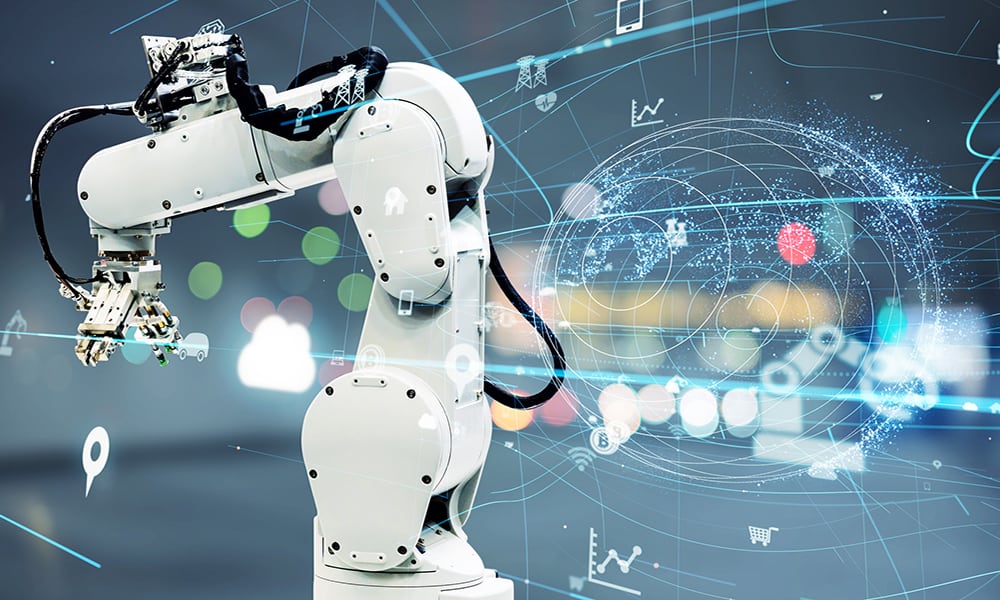The internet of things (IoT) is transforming how we live and work in the 21st century. Nearly everyone has a connected device in their home, such as smart thermostats, lightbulbs, speakers and the virtual assistants we talk to on our phones. Many manufacturers began investing in IoT many years ago, with the goal of becoming more efficient, productive and competitive.
According to Accenture, diverse industries — from oil and gas, utilities, mining, agriculture, automotive, discrete manufacturing and beyond — are leveraging IoT to connect the entire supply chain and collect data, driving artificial intelligence and predictive analytics. By leveraging a network of embedded sensors and devices connected to appliances, vehicles and other equipment throughout their manufacturing floors, warehouses and logistics operations, companies benefit from real-time process monitoring and control. This ultimately makes them better equipped to make faster, better-informed decisions.
Modernizing The Approach To Manufacturing
IoT technologies are beginning to change the way that products are developed, manufactured and delivered. As projected by McKinsey, factories are becoming more efficient, ensuring better safety for human operators, reduced downtime and reduced error rates that help save millions of dollars. Four key areas in which IoT is poised to have the most impact include:
- Inventory Tracking And Management: Software and devices installed in warehouses track changes in inventory through an automated system, allowing companies to reassign employees to more cognitively significant tasks.
- Productivity And Efficiency: IoT devices connected to the network can communicate with each other to drive automation, and they can be monitored and controlled remotely by on-site or off-site personnel. Further, by analyzing different data derived from IoT technology, companies can uncover opportunities for optimization of business processes.
- Remote Workers: IoT technology is transforming the staffing of manufacturing facilities. In the past, many operations required an extensive staff of technicians to maintain machinery; now sensors provide detailed information to fewer workers — possibly even a single person — to remotely observe the condition of machines.
- Data Sharing And Decision Making: IoT has completely changed how data is handled. IoT devices track and record patterns in the devices, bringing real-world data that can be shared across the supply chain to leverage for fact-based decision making.
Leveraging Data
Indeed, as companies deploy IoT across their operations, the volume of data they’re generating can be overwhelming. To derive actionable intelligence, manufacturers are implementing data lakes and analytics solutions that can mine both the traditional structured data housed in ERPs and other systems, as well as real-time unstructured IoT data. By leveraging the data across disparate systems, predictive analytics uncover insights and patterns. Machine learning helps to uncover the big picture hidden in the data, allowing organizations to employ artificial intelligence (AI) on the vast and varied data they’re collecting. With this data, manufacturers are empowered to see and respond to crises, identify trends and run scenarios involving any possible disruption related to an IoT device. There are many ways they can leverage this data:
- Dashboards: A device passes data to a dashboard for analysis, and the dashboard delivers an alert or triggers a defined action to address issues.
- Machine Synchronization: IoT-equipped machines can communicate with each other to synchronize actions or complete specific processes. If a machine goes down, sensors can trigger a service request or other action.
- Business Process Improvements: By integrating IoT devices directly into business processes, companies can leverage their data for continuous feedback, analysis, optimization and decision making.
- Location Tracking: At-a-glance, real-time location tracking via sensors on tools, machinery, products and even people help reduce downtime lost to searching for a misplaced item.
Plan Your Investment
IoT is delivering opportunities to optimize business operations that improve profitability, but it requires an initial investment in devices and a related technology infrastructure. It’s essential that companies begin any IoT deployment with a plan developed in the context of how their operations can best leverage these resources. Companies will probably need to hire employees with specialized skills to support their IoT-equipped devices and to manage and analyze the data they generate.
Is it worth the initial investment — of money, time, personnel — as well as the business disruption to deploy IoT? To some extent, it depends on your organization’s level of efficiency and risk aversion — its need to upgrade outdated technology or drive expense reduction. IoT can deliver return on investment by saving costs and time in the long term, providing data for better-informed business decisions, helping the organization work smarter, letting technology do the work of inefficient manual processes, and reducing the risk associated with failure of legacy equipment.
There are more devices connected to the internet than ever before, and the number continues to climb as the IoT transforms the entire approach to manufacturing. The sensors in these devices transmit data about repairs, certification, operating efficiencies and opportunities to optimize the equipment. As a result, the IoT can reduce your downtime, help ensure compliance, and drive productivity and profitability.








